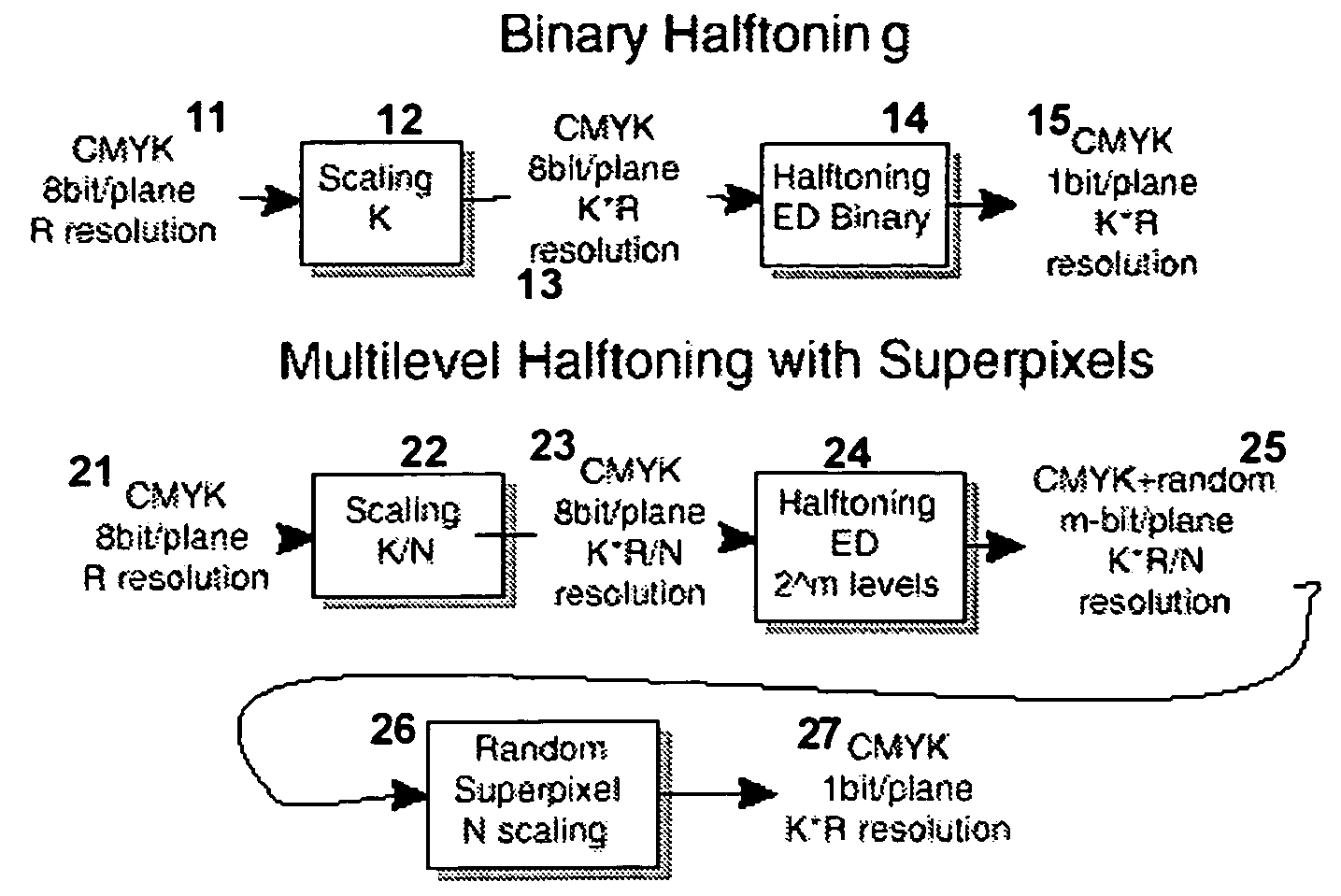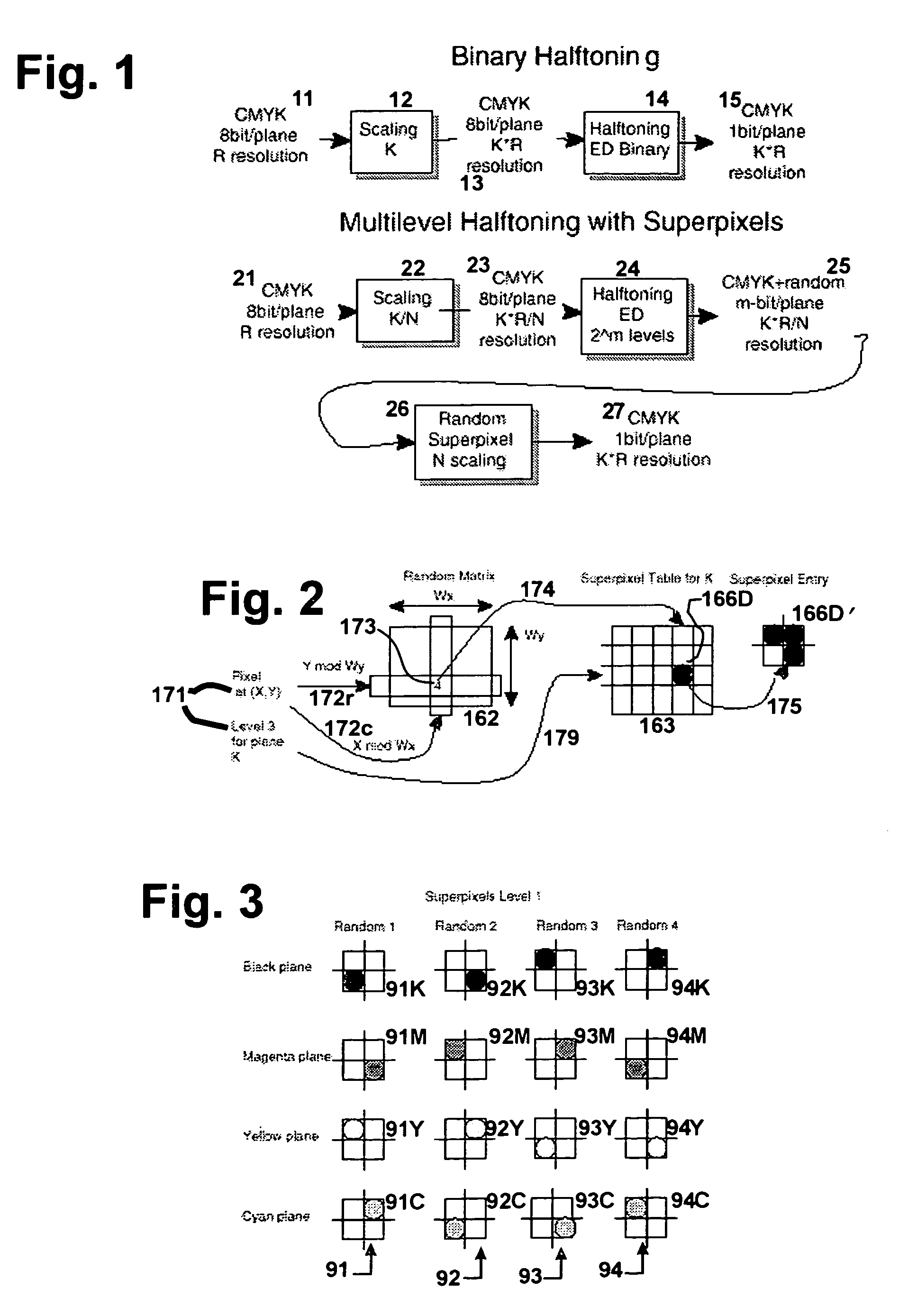Randomized superpixels to enhance multilevel image quality in economical, fast incremental-printing error diffusion
a superpixel and incremental printing technology, applied in image enhancement, digitally marking record carriers, instruments, etc., can solve the problems of high processing speed, intense economic pressure to use only commercial off-the-shelf electronic processors, and formidable challenges to technology limitations, and achieve the effect of improving the smoothness of gradation
- Summary
- Abstract
- Description
- Claims
- Application Information
AI Technical Summary
Benefits of technology
Problems solved by technology
Method used
Image
Examples
Embodiment Construction
1. Mapping Spatial Resolution to Colorimetric Resolution
[0085]Actual spatial resolution needed for photograph-like reproduction is low (6 to 8 dot / mm, 150 to 200 dpi), provided that the number of possible color levels is high enough. The low resolution requirement applies particularly in large-format images as these are most commonly viewed at relatively greater distances—and also if the above-mentioned strict identicality of adjacent pixels is avoided. Therefore actual imaging of details can be traded-off for more colors to enhance smooth calorimetric gradation.
[0086]This approach is pursued in the present invention. Preferred embodiments of the invention combine the benefits of multilevel error diffusion and fine colorimetric resolution, to virtually eliminate both patterning and color contouring.
[0087]The invention, however, is applicable to systems in which the final printing stage is actually either multi-level or binary. In other words, the multilevel ED processing may be only...
PUM
 Login to View More
Login to View More Abstract
Description
Claims
Application Information
 Login to View More
Login to View More - R&D
- Intellectual Property
- Life Sciences
- Materials
- Tech Scout
- Unparalleled Data Quality
- Higher Quality Content
- 60% Fewer Hallucinations
Browse by: Latest US Patents, China's latest patents, Technical Efficacy Thesaurus, Application Domain, Technology Topic, Popular Technical Reports.
© 2025 PatSnap. All rights reserved.Legal|Privacy policy|Modern Slavery Act Transparency Statement|Sitemap|About US| Contact US: help@patsnap.com



